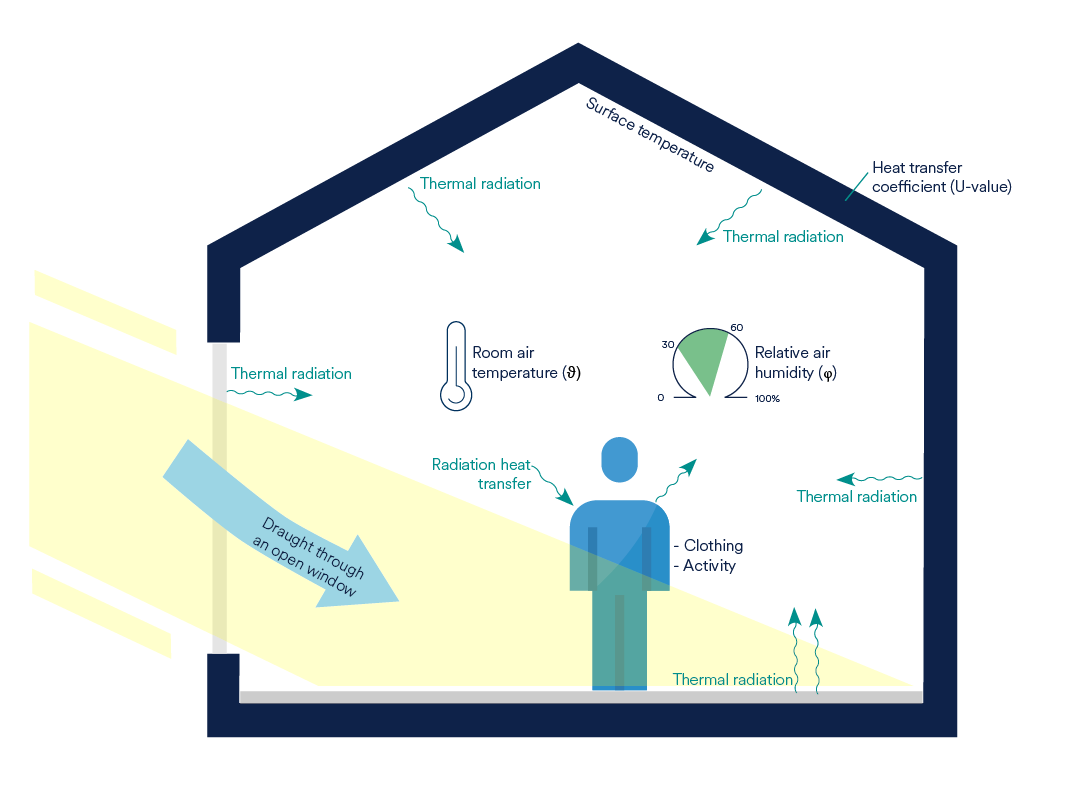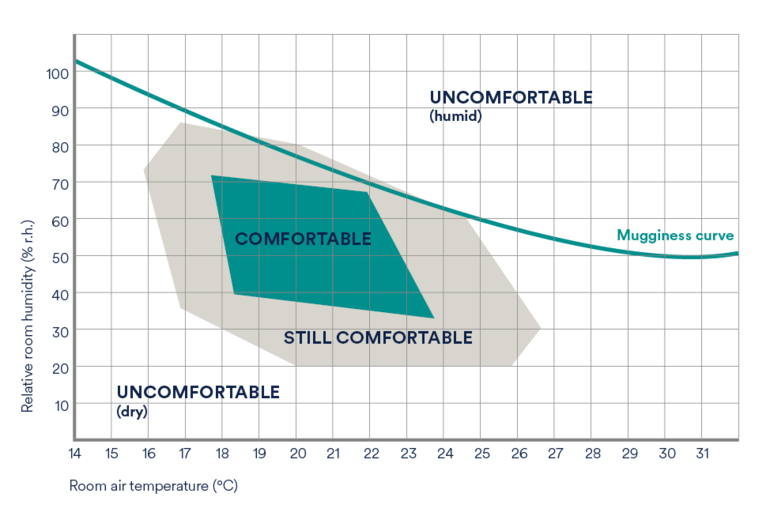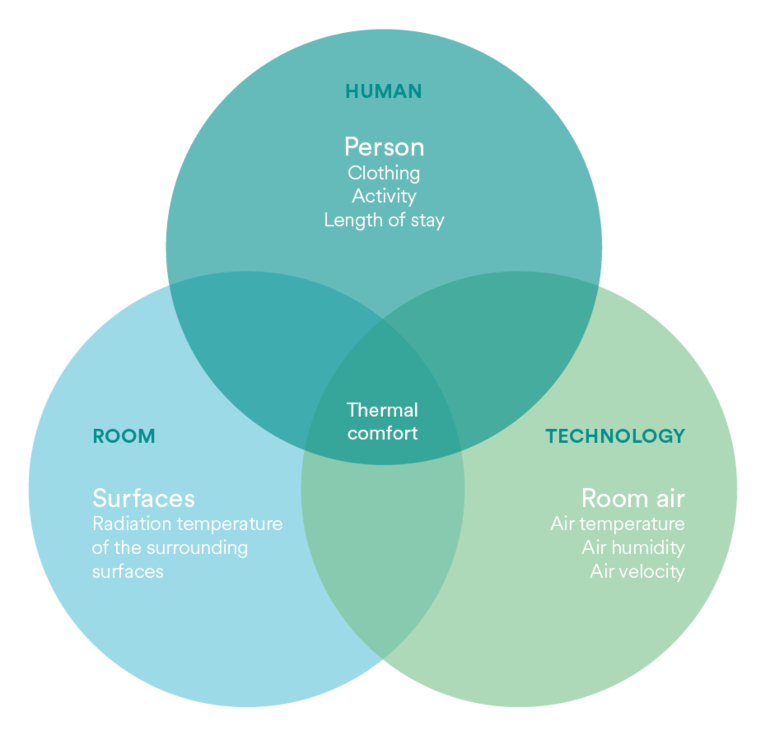What is it and what factors need to be taken into account?
“I feel comfortable in this room.” You simply couldn't give building services designers a bigger compliment. But a whole raft of factors need to be taken into account to ensure (thermal) comfort. Every person has a different individual perception and also the ideas of well-being or comfort often vary somewhat. Nonetheless, comfort can be technically measured and controlled with the aim of creating conditions in a room in which most people feel particularly comfortable.
What is comfort?
Comfort exists when the condition of the room climate and the room air quality is such that a person feels comfortable in the space. This applies to summer as well as winter. The European standard EN ISO 7730 defines additional comfort criteria, on the basis of which the air outlet and the room air flows are optimised in detail to achieve thermal comfort. The main influencing factors are the room air temperature, thermal radiation intensity, air movement or air velocity in the room, and the temperature stratification in the room, that is the temperature difference between the floor and shoulder height.
The acoustics in the space and the air humidity are also critical criteria affecting comfort, even if they are not defined in the standard as design criteria for thermal comfort.
The specific terms are explained in more detail below.
Room air temperature
It has the greatest influence on whether a person feels comfortable in a room or not. The temperature perceived as being comfortable depends heavily on subjective criteria, such as clothing, activity, age and gender. In winter, the room air temperature should be between 20 and 23 °C, while in summer people wear lighter clothes, so that temperatures of up to 26 °C are still comfortable.
Asymmetric radiation
Walls and windows surround the room and emit thermal rays, depending on the temperature and solar radiation. When a person is located in the room, they essentially have a heat transfer with these surfaces. Hot surfaces also emit unpleasant localised heat radiation. Strong direct radiation, which only affects certain parts of the body, is generally perceived as annoying.
Relative air humidity
The relative air humidity in rooms should be between 40 and 55 %. This is not a direct requirement of DIN EN ISO 7730 but is recommended by medical professionals. Sufficient humidity in a room prevents the mucous membranes from drying out and thus strengthens the immune system. However, people find too high humidity levels unpleasant because the body's own temperature regulation is restricted.
Air movement in the room
Draughts are also unpopular because they cause the human body to release more heat through convection and evaporation. Intelligent air management is therefore essential for a comfortable indoor climate. The air velocity should not exceed 0.3 m/s.
Room air quality
The room air should be rich in oxygen, odourless and low-emission. The Pettenkofer value is the limit value for assessing room air quality and it should not exceed a CO2 concentration of 0.1 % in the room air. If the general conditions ensure good-quality room air, this is conducive to good health and performance.
Acoustics
Acoustics also play a key role in comfort. It does not help if the room has a pleasant temperature but the operating noise of the air conditioning system is producing unwanted sound/noise. Air conditioning units should not produce unpleasant noises, particularly when people want peace and quiet. Experience has shown that a low air noise is acceptable, but recurring noises are perceived as disturbing.
Measuring and controlling comfort in the Kampmann FEC R&D Centre
The issue of comfort is part of everyday working life at Kampmann. We understand the importance of individual consultation and adaptation of air conditioning technology. After all, every sector and every application demands a different approach to the solution. Achieving comfort is a complex matter but, as explained at the start, it is measurable and hence also controllable.
Dr. Oliver Höfert, Head of Principles and Simulation at Kampmann, knows this very well. He tests Kampmann products and entire systems for their comfort in the company's own Research & Development Centre (FEC), with the results ensuring that people feel comfortable in a room.
The properties of the customer's premises can be individually modelled in the laboratory. For instance, walls, floors and ceilings can be heated or cooled independently of each other in the air flow laboratory. Real climatic conditions can therefore be simulated and the most appropriate air conditioning units and ventilation technology designed. Sensors measure the air velocity and room temperature. This produces the draught rate, one of the key parameters that can be derived for the simple assessment of comfort. Special room situations can also be simulated in the laboratory to adapt the effectiveness of the units to these situations.







